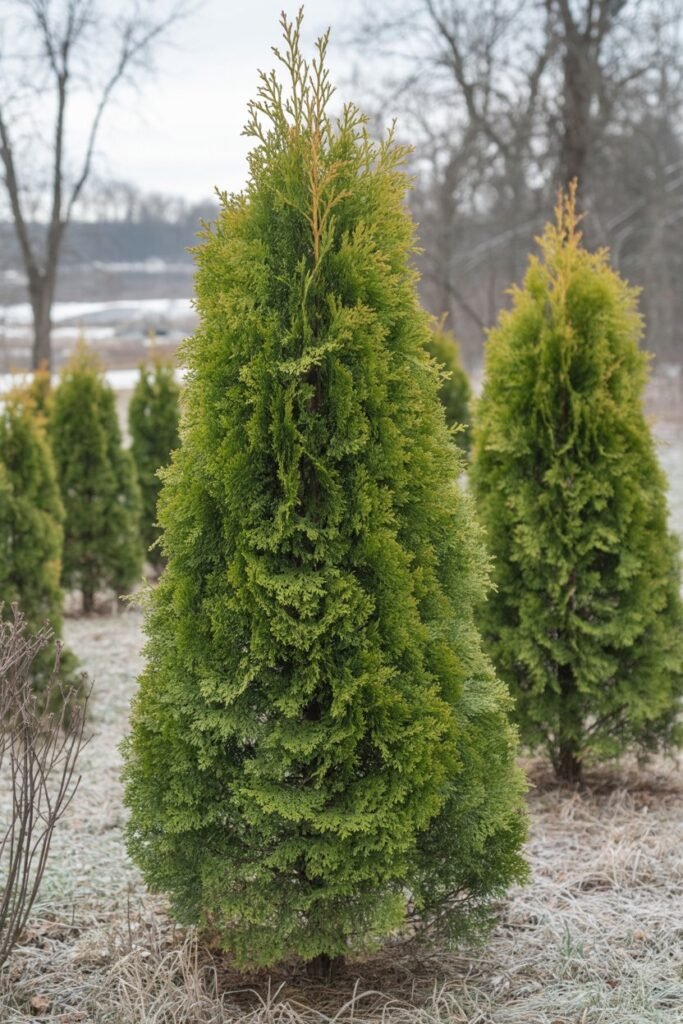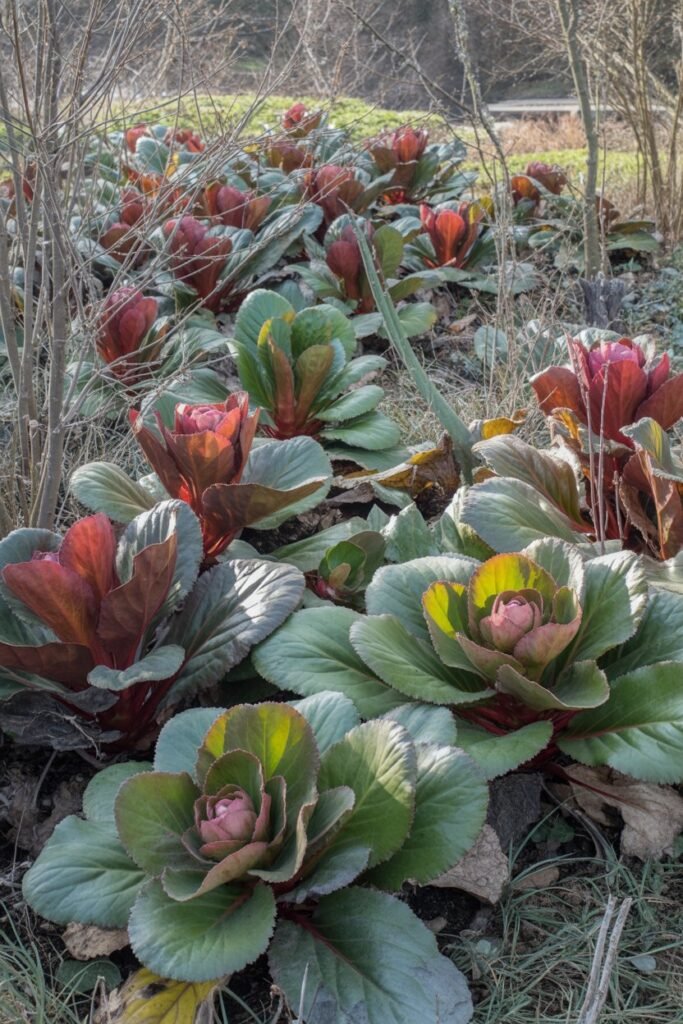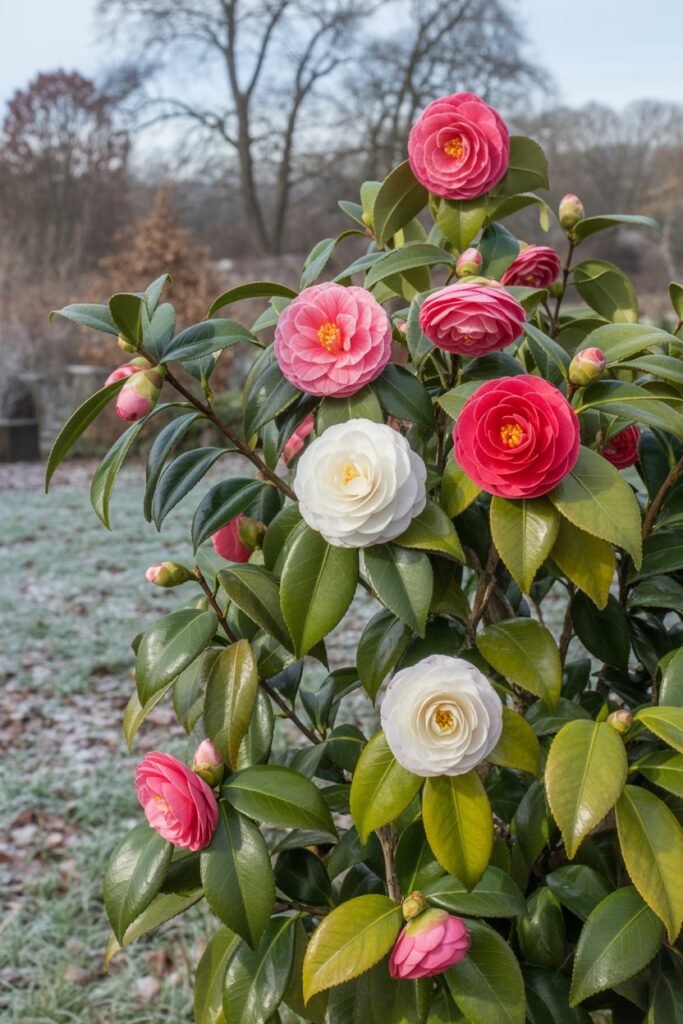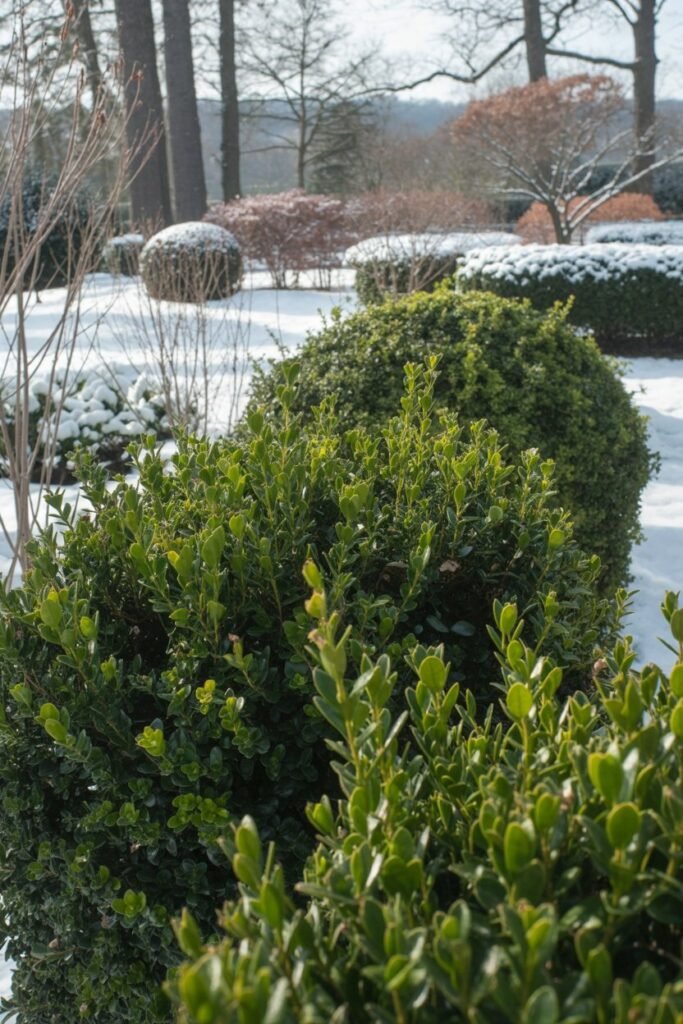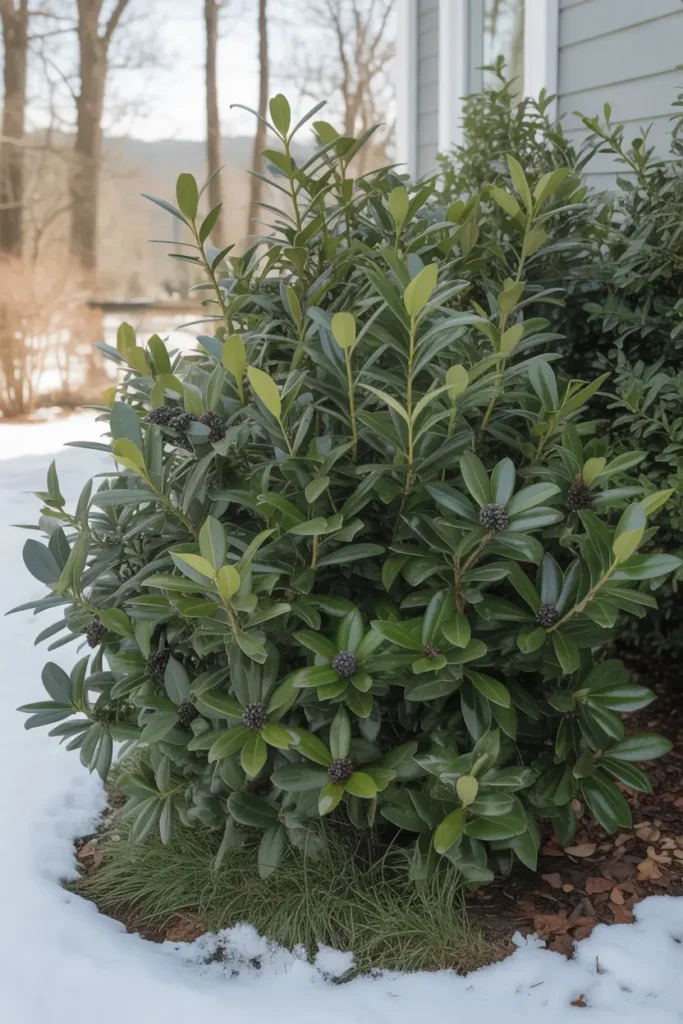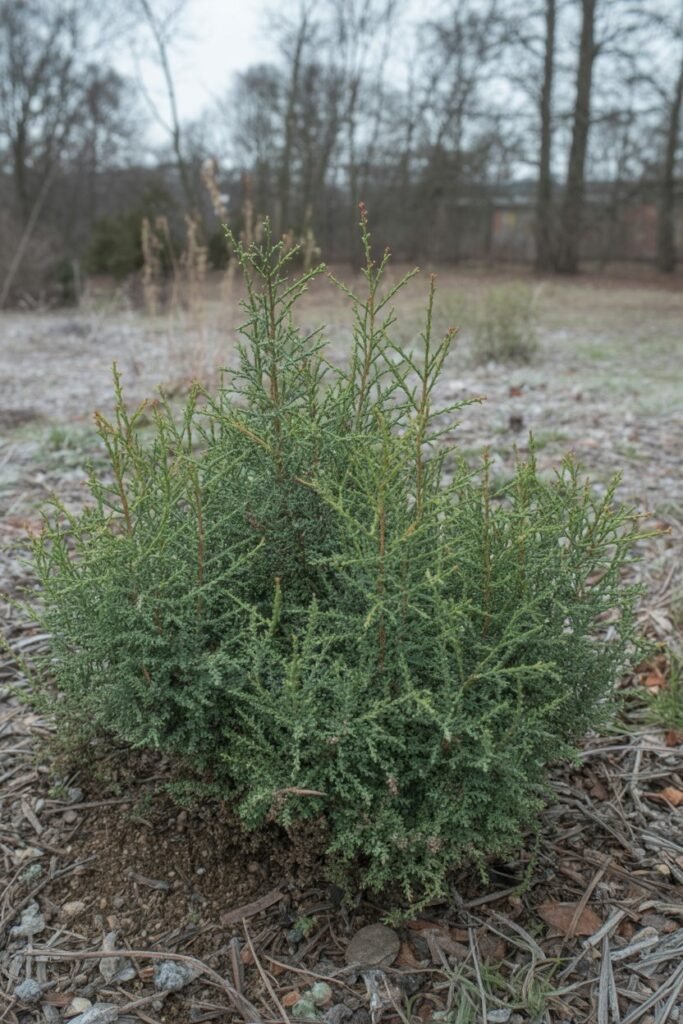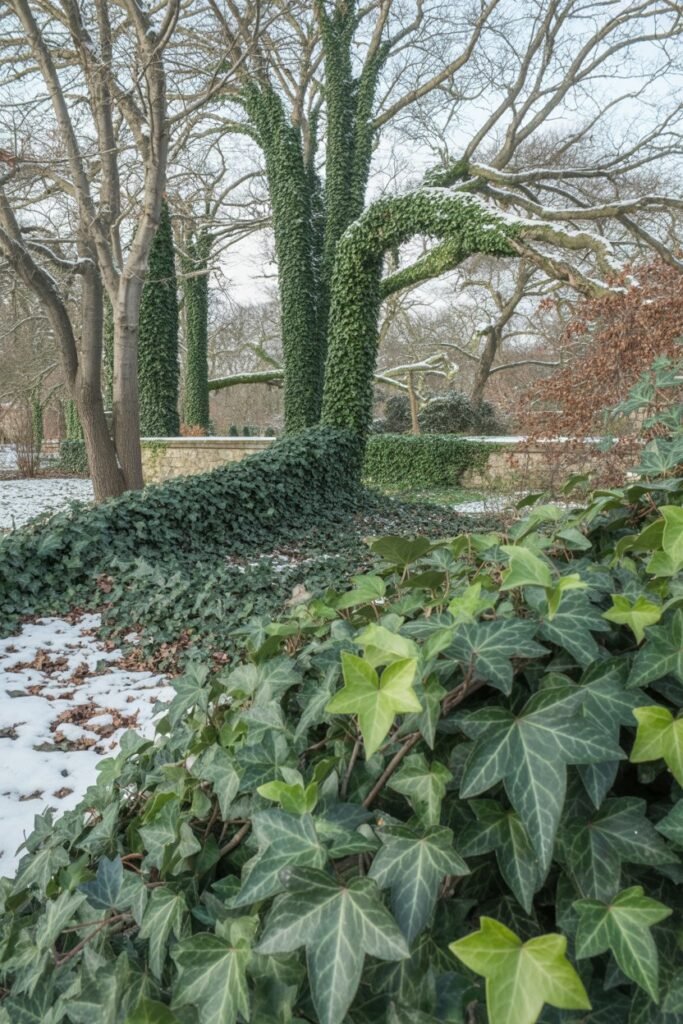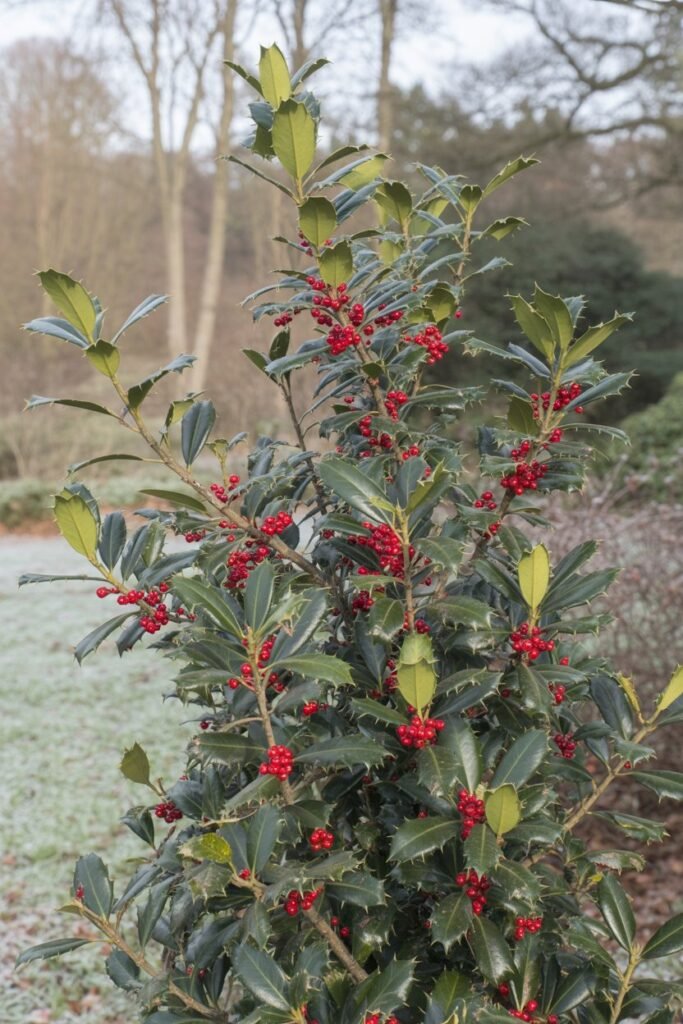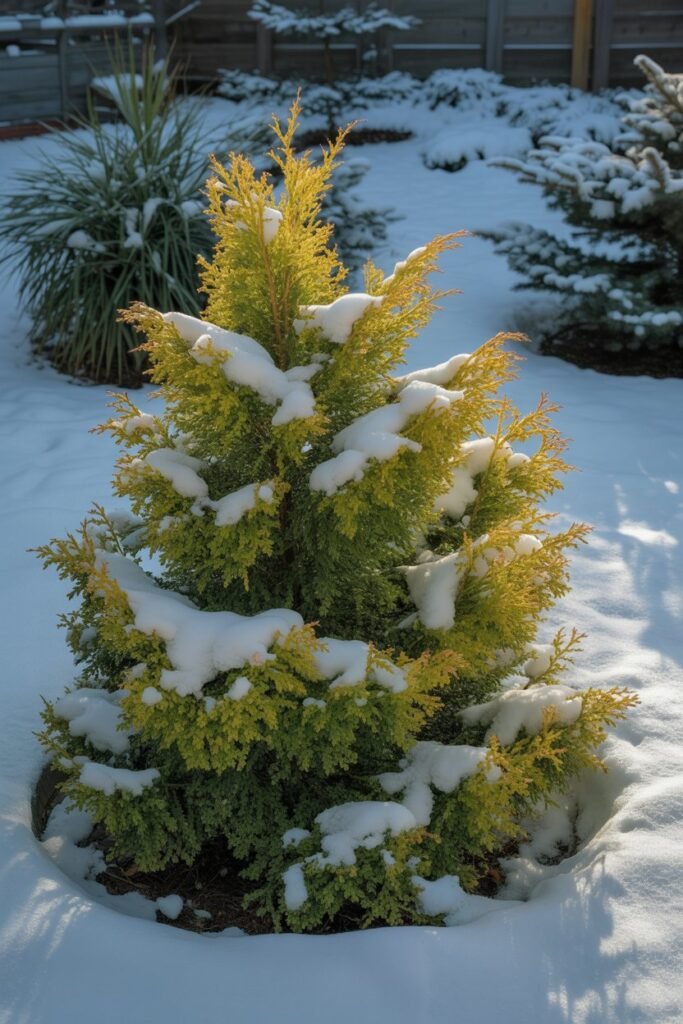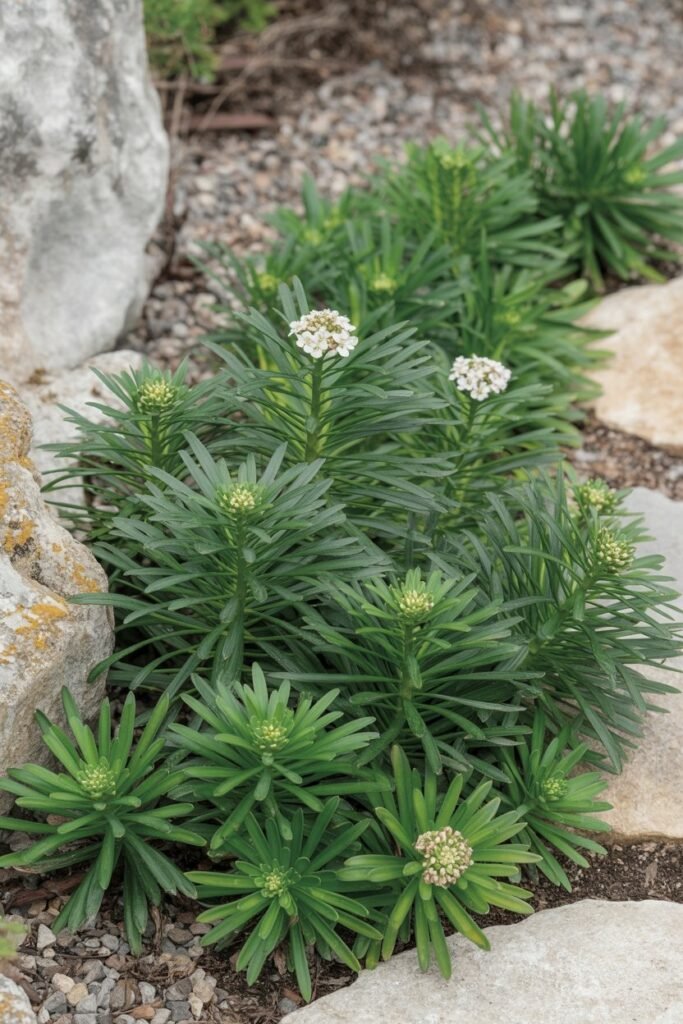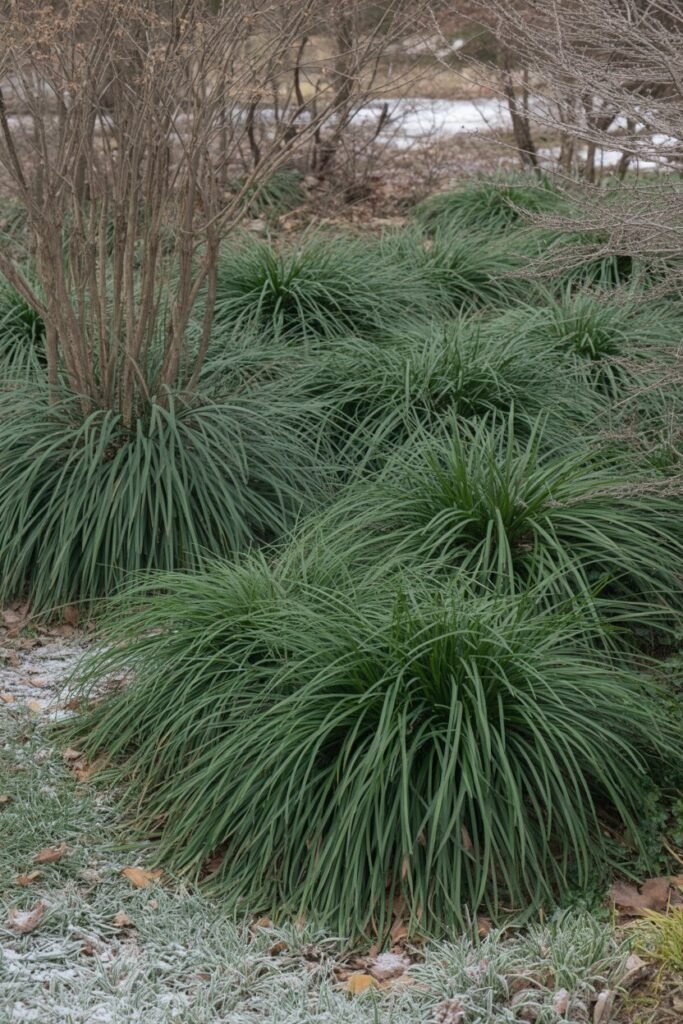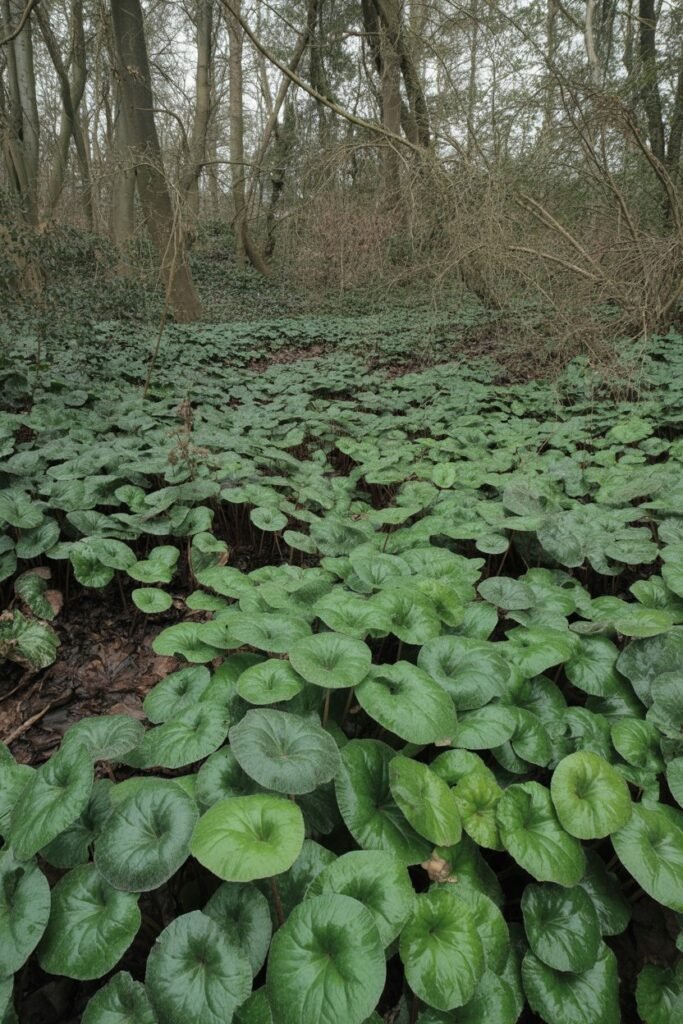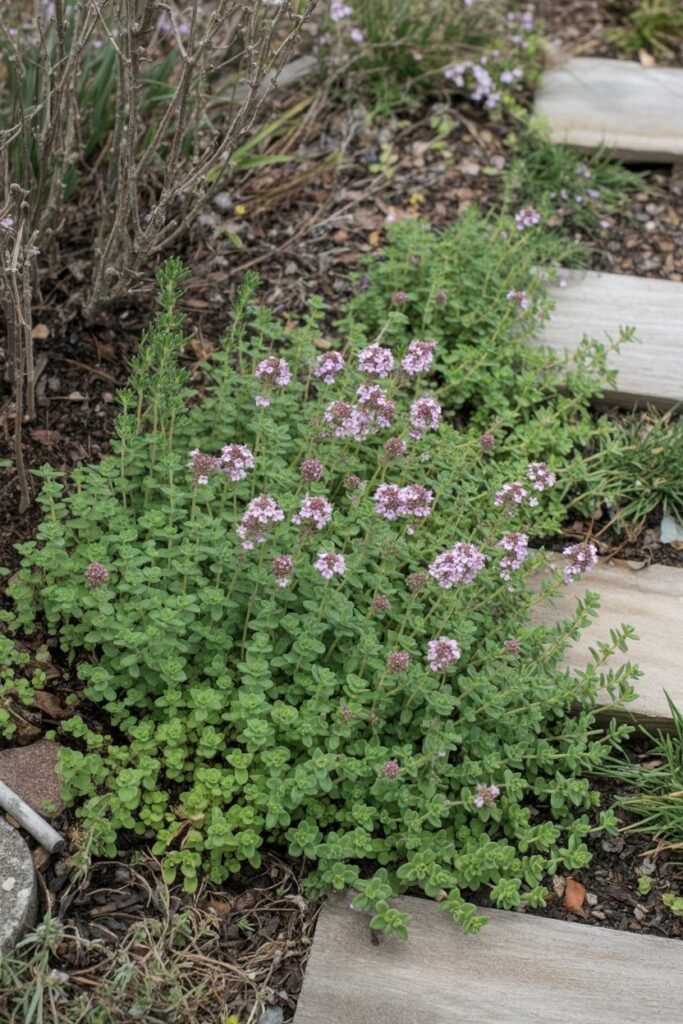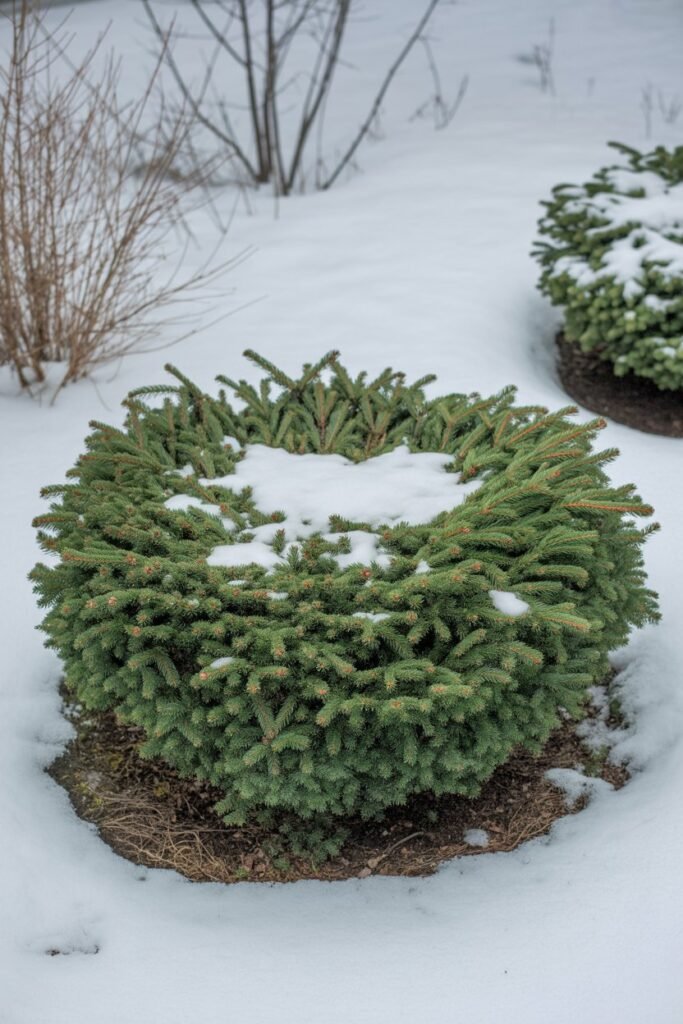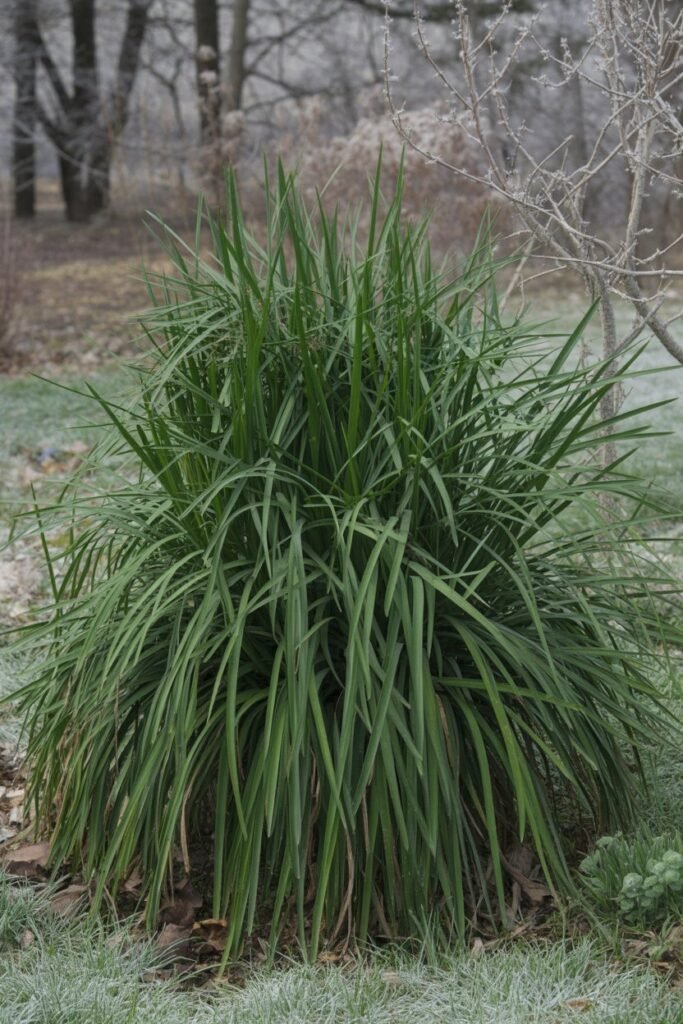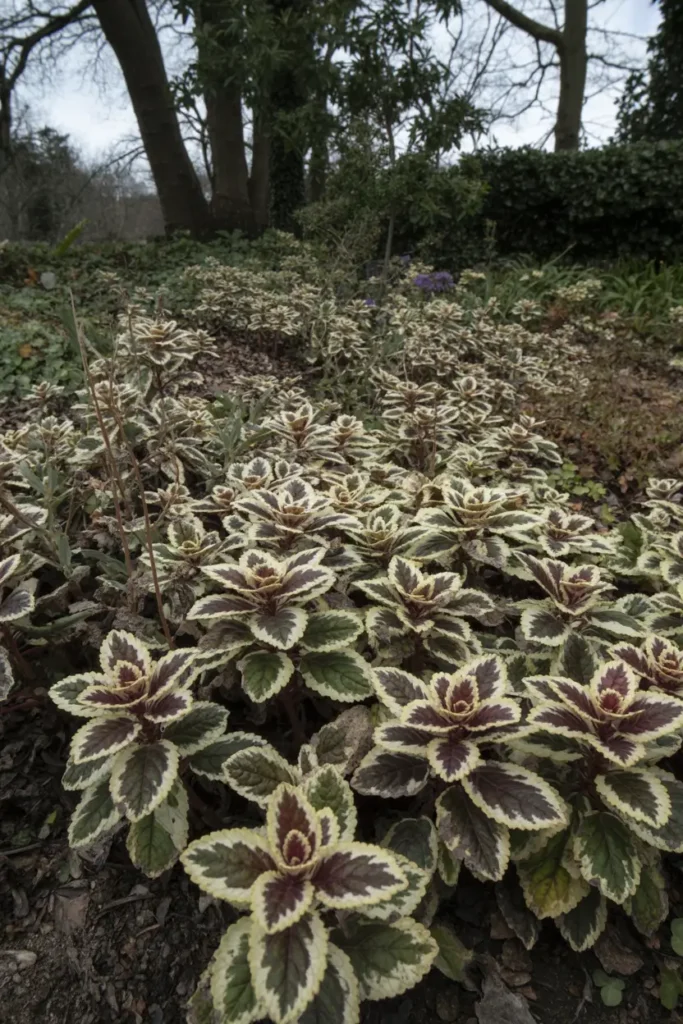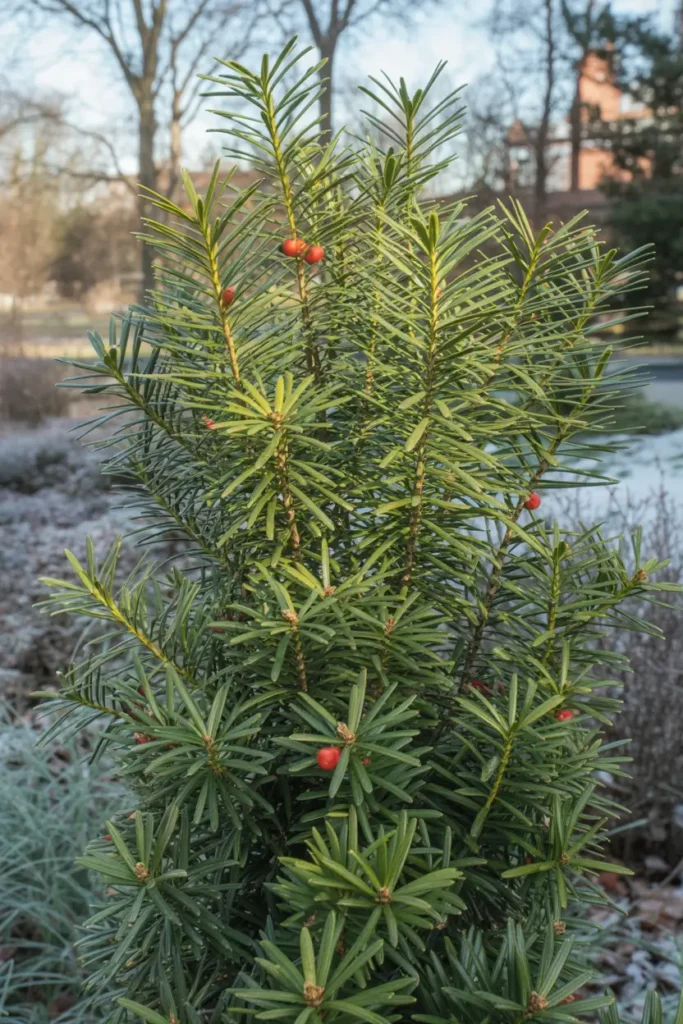17 Best Plants That Will Stay Green In Winter
Winter doesn’t have to mean a colorless garden. While many plants go dormant and lose their vibrant appearance during the colder months, I’ve discovered that certain varieties maintain their stunning green foliage year-round, creating beautiful winter landscapes that defy the season’s typically dreary reputation.
I’ve spent years researching and growing winter-hardy plants, and I’m excited to share my top 17 picks that will keep your garden looking lush and green even when snow covers the ground.
These plants not only survive harsh winter conditions but actually thrive, offering continuous color and structure to your outdoor space when you need it most.
1. North Pole Arborvitae (Thuja occidentalis)
I consider North Pole Arborvitae one of the most reliable evergreens for maintaining rich green color throughout winter.
This versatile conifer features a narrow columnar structure that makes it perfect for creating privacy screens or defining garden spaces.
What sets this plant apart is its natural resistance to winter burn, a common problem that causes many evergreens to turn brown during harsh weather.
I’ve watched these trees maintain their soft-textured, deep green foliage even through the most challenging winter conditions in zones 3-8.
2. Bergenia (Bergenia spp.)
I love how Bergenia, also known as pigsqueak, transforms during winter months. While many consider it primarily for its spring flowers, I grow it specifically for its thick, cabbage-like leaves that remain evergreen in most regions.
The bonus feature that makes me recommend this plant is how some varieties develop stunning red or burgundy leaf coloring in winter, adding unexpected warmth to the cold season landscape. I find it thrives in partial shade and creates excellent ground coverage.
3. Camellia (Camellia spp.)
I can’t think of many plants that offer both evergreen foliage and spectacular winter blooms like camellias do. These broadleaf evergreen shrubs maintain their shiny green leaves year-round while producing elegant multi-petaled flowers during the coldest months.
I’ve grown camellias in zones 7-10, and I’m always amazed by their ability to brighten winter gardens when most other plants look dormant. The glossy foliage provides constant visual interest, making them valuable additions to woodland landscapes and foundation plantings.
4. Boxwood (Buxus spp.)
I rely on boxwood as the backbone of many winter garden designs because of its consistent performance and versatility. This popular evergreen shrub maintains excellent green color throughout winter, providing structure and formality when other plants have lost their leaves.
What I appreciate most about boxwood is its adaptability to both sun and shade conditions in zones 5-9. I use it for hedges, borders, and formal garden elements, knowing it will look polished and green regardless of weather conditions.
5. Inkberry Holly (Ilex glabra)
I’ve found Inkberry Holly to be an outstanding native alternative to boxwood, especially for gardeners dealing with boxwood blight issues. This evergreen shrub naturally maintains its mounded shape and resists disease, pests, and winter burn.
I particularly value this plant because it thrives in zones 5-9 and tolerates various soil conditions. The dense, dark green foliage stays vibrant all winter, and I often recommend it for foundation plantings and natural hedges.
6. Juniper ‘Nana’ (Juniperus procumbens)
I consider dwarf Japanese garden juniper ‘Nana’ one of the best ground-hugging evergreens for maintaining winter color. This hardy plant holds its blue-green color throughout the coldest months while providing excellent ground coverage.
What makes me recommend this juniper is its deer resistance and shade tolerance, qualities that aren’t common in many evergreen ground covers. I’ve successfully grown it in zones 5-9, and it consistently performs well in challenging winter conditions.
7. English Ivy (Hedera helix)
I include English Ivy with caution because of its aggressive nature, but I can’t deny its effectiveness at maintaining dark green color all winter. The vines create thick groundcover that stays vibrant when most other plants look dormant.
While I appreciate its winter performance, I always advise gardeners to plant it responsibly, as it can climb trees and crowd out native plants. I recommend it only in controlled situations where its spreading habit won’t become problematic.
8. Holly Bush (Ilex spp.)
I find holly bushes create some of the most eye-catching winter displays with their evergreen leaves and bright berries. English holly performs particularly well in zone 6, maintaining its glossy green foliage while producing the classic red berries associated with winter holidays.
I’ve grown holly bushes ranging from 6 feet to impressive specimens reaching 50 feet, depending on the variety. The consistent green color combined with colorful berries makes them standout features in winter landscapes.
9. False Cypress (Chamaecyparis spp.)
I love how False Cypress varieties like Soft Serve Gold provide both style and structure with their year-round interest. These evergreens look particularly magical after snowfall, when their distinctive foliage shapes are highlighted against white backgrounds.
I grow these plants in zones 4-8, where they prefer part sun to full sun conditions. Their formal appearance makes them excellent accent plants, and I often use them as focal points in winter garden designs.
10. Candytuft ‘Snowflake’ (Iberis sempervirens)
I appreciate Candytuft for its dual-season performance – staying green all winter and producing carpets of white flowers in spring. This low-growing perennial maintains its evergreen foliage even in harsh winter conditions.
What I find particularly valuable about this plant is its drought tolerance and preference for full sun. I use it in rock gardens and as edging, knowing it will provide consistent green color throughout the dormant season.
11. Dwarf Mondo Grass (Ophiopogon japonicus)
I recommend dwarf mondo grass as a “no-mowing” solution for areas where you want consistent green color. This slow-growing, evergreen groundcover tolerates shade and requires minimal water, making it incredibly low-maintenance.
I find this plant particularly useful in zones where traditional grass struggles during winter. Its tough nature and evergreen habit provide reliable green coverage when other groundcovers go dormant.
12. European Wild Ginger (Asarum europaeum)
I grow European Wild Ginger specifically for its glossy foliage that stays green in mild winter areas. This groundcover forms attractive mats of heart-shaped leaves that provide consistent color in shaded garden areas.
I find this plant thrives in rich, moist soil and shade conditions where many other plants struggle. It’s an excellent choice for woodland gardens and areas under trees where maintaining green color can be challenging.
13. Creeping Thyme (Thymus serpyllum)
I love creeping thyme for its practical benefits beyond just staying green – it’s rugged enough to walk on and releases pleasant scents when crushed. This mat-forming groundcover helps control erosion while suppressing weeds.
What makes me recommend this plant is its dual functionality. I use it in pathways and between stepping stones, knowing it will maintain its green appearance while serving practical purposes throughout winter.
14. Bird’s Nest Spruce (Picea abies ‘Nidiformis’)
I find Bird’s Nest Spruce fascinating because of its unique growth habit that resembles a flattened sphere. This type of Norway spruce maintains its distinctive evergreen color while providing interesting architectural form in winter landscapes.
I grow this plant in zones 3-7, where it typically reaches 2 to 3 feet in both height and width. Its compact size and reliable winter performance make it perfect for foundation plantings and small garden spaces.
15. Liriope ‘Big Blue’ (Liriope muscari)
I appreciate Liriope for its fountain-like growth habit with grassy straps that arch gracefully while maintaining green color through winter. This clumping perennial performs reliably in zones 5-10, offering both foliage interest and summer flowers.
What I find particularly valuable about this plant is its versatility in different light conditions and its ability to provide texture variation in winter gardens. I often use it as edging or in mass plantings for consistent green coverage.
16. Ajuga ‘Burgundy Glow’ (Ajuga reptans)
I grow Ajuga ‘Burgundy Glow’ for its year-round foliage that becomes even more interesting in fall and winter. The leaves combine creamy white, burgundy, and dark green colors, becoming more bronze as temperatures drop.
I find this groundcover particularly useful because it maintains good color year-round while producing attractive blue flower spikes in spring. It spreads readily to create dense coverage in shaded areas where grass won’t grow.
17. Yew (Taxus spp.)
I consider yew one of the most versatile evergreen shrubs for maintaining green color throughout winter. Varieties like Stonehenge offer narrow habits and excellent shade tolerance, making them adaptable to various garden situations.
I grow yews in zones 4-7, where they provide reliable green coverage and can be shaped into formal hedges or left natural. Their durability and consistent performance make them foundational plants in many of my winter garden designs.
Conclusion
Ready to transform your winter garden into a green oasis? Start by selecting 2-3 plants from this list that match your growing conditions and design goals.
I recommend beginning with reliable performers like boxwood or arborvitae, then expanding your collection as you gain confidence with winter-hardy evergreens.

